Notes on what I am really doing in the garden.
Mexican Primrose eradication in front beds
Last Fall I decided to sift the soil of the front beds after the first quick weeding did nothing to get rid of this stubborn pretty. It is pretty at one stage, but dries to tall sticks throughout the planting beds. So, there I was taking bit by bit, each area and making sure.

Mexican Primrose coming through root ball of killed plant. Yellowish fleshy root shows at the bottom.
***
***
I got all the roots, I think, with a sharp trowel. All the plants affected were dug up, shaken out, forbidden roots found and placed in nursery pots in the shade. The roots have a thick, fleshy root, which is yellowish, rather than red like the stems of this plant. This must be romoved completely or it will come back.
Fast forward to last month when a second thorough check was done and more stragglers found and dug.
Last weekend, another month later, I put all the plants back, added a few monkey flowers and sages to go with the existing conifers, Germander, Teucrium chamaedrys ‘Prostratum’, (below), Thyme and Snow-in-summer, Cerastrum tomentosum. These last three are some of the most useful Mediteranneans for a California garden.
Now after a week or so after the replanting I see little sprouts of the primrose still popping up. Certain plants become invasive in different areas of the country and the world. This primrose may be perfectly desirable to some, in fact I see it all the time in nurseries. When one finds itself too much ‘at home’ it is a real pain to remove completely.
New Native Meadow
Blooming now in the meadow are California Poppies, Eschscholzia californica, Bird’s Eye Gilia, Gilia tricolor, Tidy Tips, Layia platyglossa, Chinese Houses, Collinsia heterophylla, which I see the deer like! All the tops are nibbled off of them. While weeding I’ve also noticed gopher holes but no apparent damage, deer hoof prints. I’ve been happy to find natives not sown but growing here in the new weed-free area, Pearly Everlasting, the Indian Rice Grass, Pretty face, Elegant Madia, California Yarrow, Rudbeckia hirta and Valley Tassels. Non natives appearing are Ajuga and Lamb’s ears, which I’ll weed out if necessary.
This meadow is becoming such a source of deep pleasure for me in the garden. It’s fun to walk down and see what is new. The perennials around the edges are growing well, most are native and also new to me. Even Tractor Man noticed and asked the other day, “Hey, did you throw out some poppy seeds out there?” So much fun!
One grass is positively ID’d as Pacific Fescue, Vulpia microstachys, and the rest of the grasses in the mix are a mystery so far. Bonnie, at our native plant nursery says the reason the native grasses has been edged out is because the non-native grasses bloom and go to seed before the natives. Another new native grass identified this Spring is Indian Rice Grass, Achnatherum hymenoides. It flowers with very airy and delicate seed heads, low to the ground, about 4-5 inches. The stems are spiky deep green and appear in a kind of star pattern before the seeds form. The other grasses I am supposed to have are, Purple Needlegrass, Nassella pulchra and California Melic, Melica californica
Weeding
Weeds are huge now, so I’m working on both natural and new meadows, section by section, trying to get most before they go to seed. Very satisfying… and then I water each area to settle the soil and wash off the rocks.
I’m finding that where one weed is, another will be. They have meetings, apparently. In the natural meadow there was an infestation of filaree, which was removed. It left lots of bare spots which could have become very dry, but for the rain we’ve had this year. I’ll add pine needle mulch in those bare spots when it becomes hotter.
Weeds have spines and stickers now; that and oak leaves cause me to wear gloves all the time. The most prolific weeds found are Spreading Hedgeparsley, Torilis arvensis, and Bedstraw, Galium aparine, a CA native and Field madder, Sherardia arvensis, two similar weeds. The seedlings for these can be found in CA Native Seedlings.
Adventures in weeding
- Ate a bug.
- Weeded over an ant hill and kept going.
- Discovered new natives plants hiding under the weeds! Fun!
Adventures in planting
- In the first shovel full of dirt a tarantula came out…thank heavens, I didn’t hurt him. He lived there for a few days and ran out whenever I watered.
- Chopped through my irrigation hose accidentally and I wasn’t aware that I had said anything but Tractor Man said I had scared the dog.
Wildflowers seedling “muffins” planted out in the natural meadow are doing well. They were sown in seed trays on January 1st, this year and planted out April 15th. They’re easily twice the size as when first planted and I’m just hoping that they will reseed and be able to spread. I’m weeding this huge area, may have bit off more than I can chew here, but the results are so satisfying! Slowly but surely, I guess.
Harvesting and drying a ton of dill.
This dill will be spread out on a shallow cardboard box to dry. It will take several weeks to dry completely and then it will be stored in small glass jars.
A plant correctly ID’d
What I thought was Wild Onion, Allium crispum, I’ve found to be Twining snake lily, Dichelostemma volubile. What a cool name. It has a thick very strong stem that winds itself charmingly up through manzanita and deerbrush
Mulching with oak leaves
I need much mulch. I don’t have any at the moment, so I’m using oak leaves to further loosen the clay soil when planting. I mix it right in the planting beds with gloves hands or a trowel turning the soft damp soil over on the leaves and after planting use them again as mulch. After five years of doing this, plus using pine chips and needles as additional mulch the beds are easy to weed and the soil is becoming much more friable. The native soil is a combo of decomposed granite, and clay. They both have good nutrients but need dried leaf material for growing most plants sucessfully. I make sure the plant itself is in soil and press firmly to prevent air pockets. I’ve been planting Alum root, Heuchera micrantha in shady places near an oak since they need little water. Is planting over gopher holes a bad idea? May be.

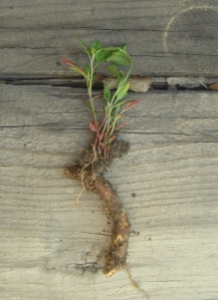
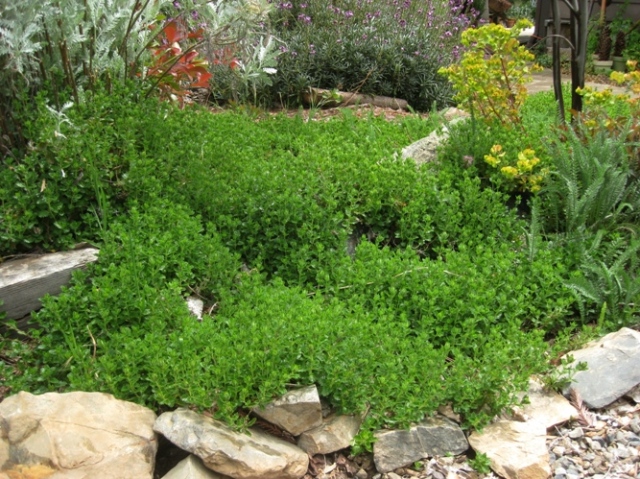
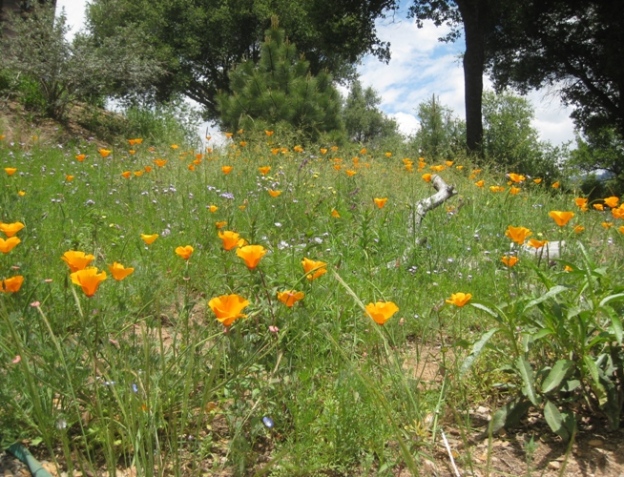
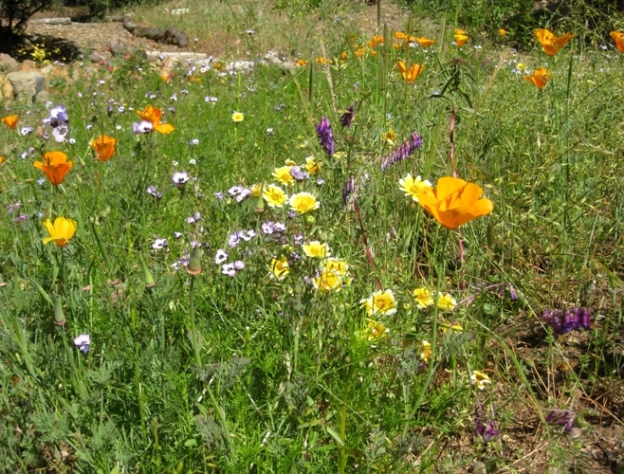
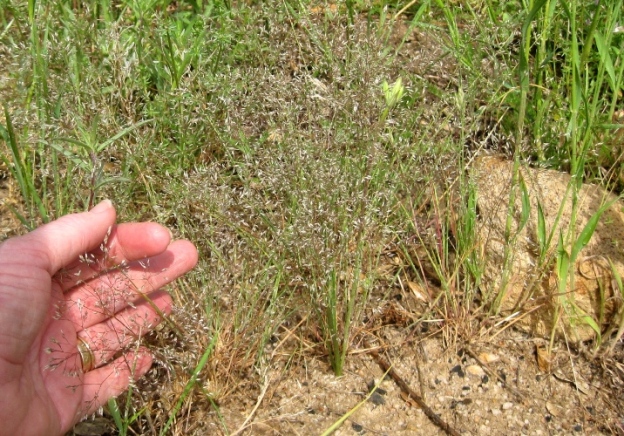
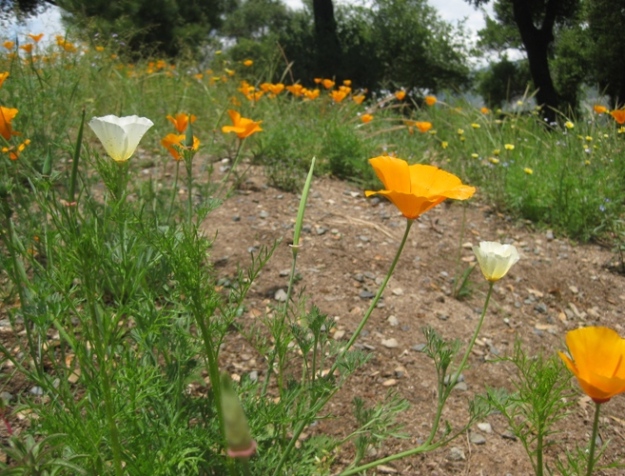
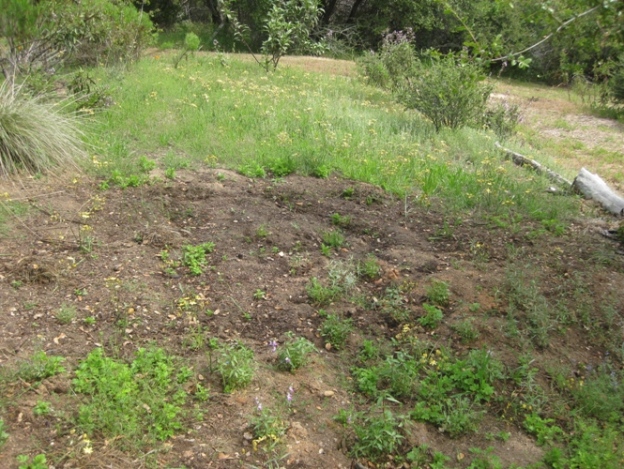

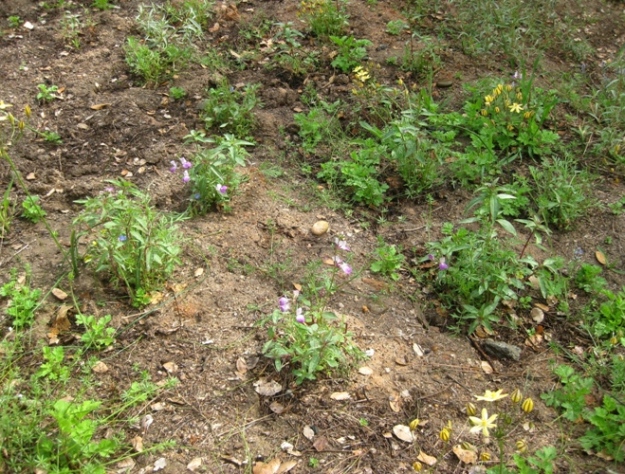
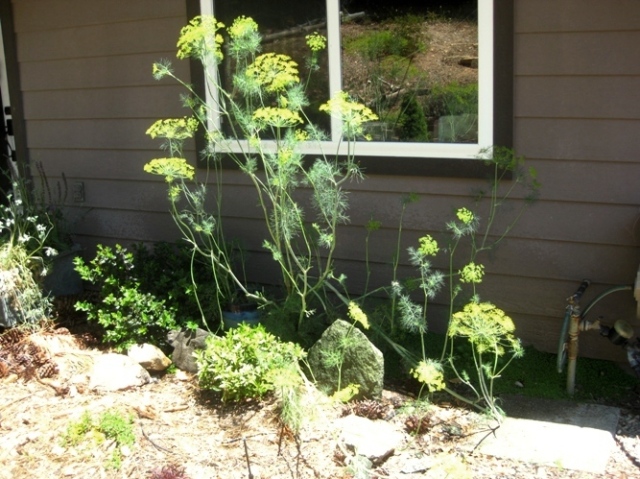
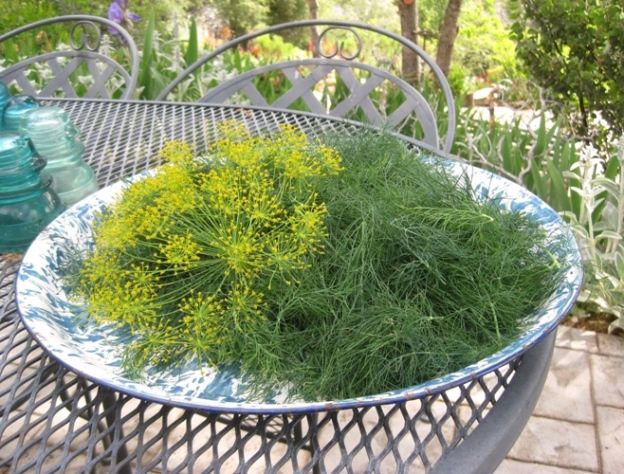
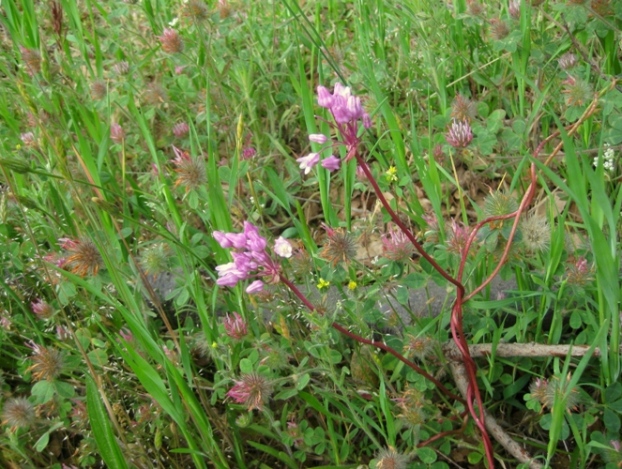
10 comments